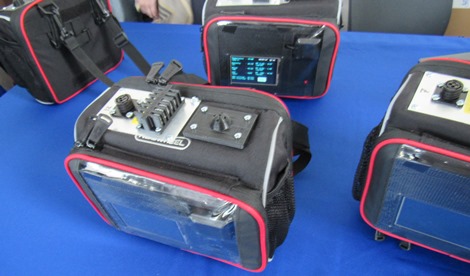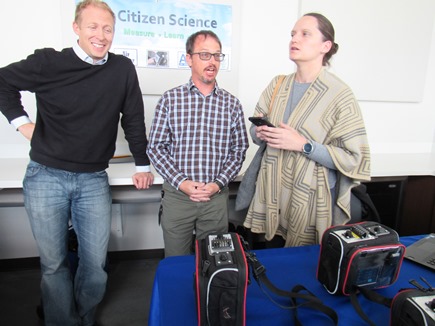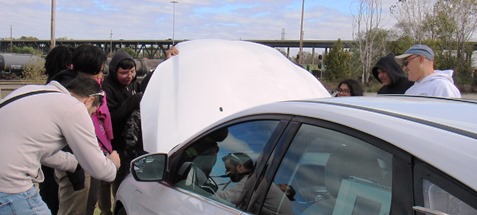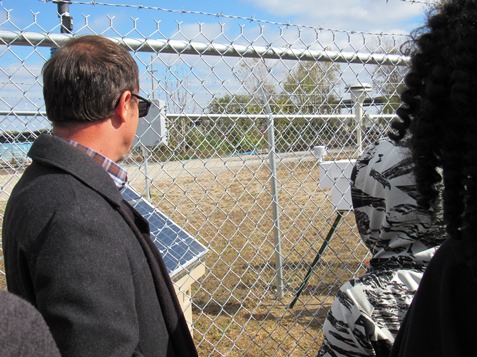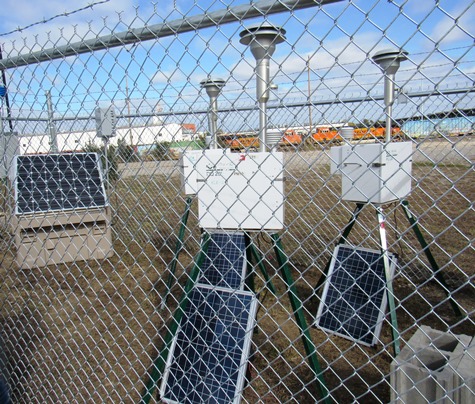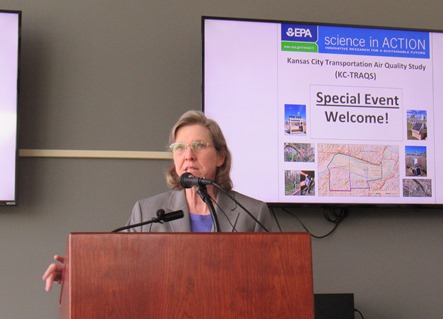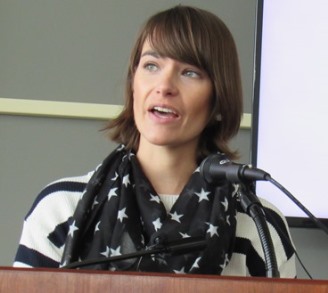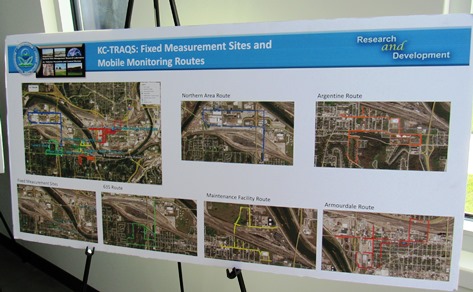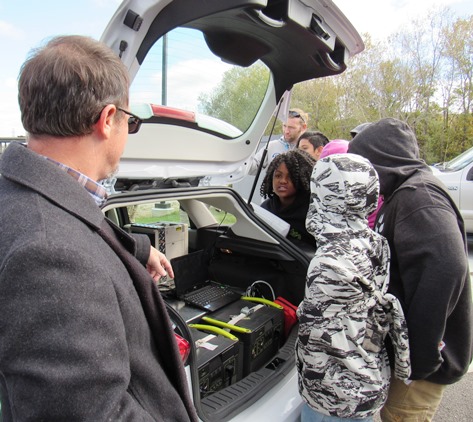
by Mary Rupert
Schoolchildren and residents will soon be testing the air for pollution on the south side of Kansas City, Kansas.
Today the Environmental Protection Agency introduced an air-quality study of the Argentine, Armourdale and Turner areas of Kansas City, Kansas.
Kansas City Transportation Local-Scale Air Quality Study (KC-TRAQS) was launched during a program held in the community room of the South Patrol police station at 21st and Metropolitan Avenue in Kansas City, Kansas.
The location of the program launch was on a former Superfund site that has been remediated. It is also close to railroad yards, as well as close to area highways and industries.
Rosedale Middle School students participated in today’s launch, along with EPA officials, and two Unified Government commissioners, Angela Markley and Ann Brandau Murguia, and school board member Janey Humphries.
Karen Flournoy, EPA Region 7 special assistant to the regional administrator, told the gathering today that the program will focus on local air quality. She said there will be three forms of measurement – a stationary air monitor, an electric vehicle that will drive through neighborhoods collecting data from the air, and hand-held air mappers.
One of the most interesting parts of the study will involve “citizen science,” according to Flournoy. Hand-held “air mapping” equipment in the program will be checked out of the South Branch Library and the Turner Community Library by students and residents who want to participate in the effort and who receive training.
Another part of the program is an electric vehicle that will travel through the neighborhoods with air pollution testing equipment inside to check pollution levels. The testing equipment runs off solar power. The vehicle is expected to be here for two weeks in the fall and two weeks in the spring, and is expected to travel the main roads and also be near the rail yards. A contractor will be driving the car.
There also is a stationary air testing station located next to the South Patrol station, on the former Superfund site.
Flournoy said she was excited that students can be engaged in this project. Most of the people working at the EPA today became interested in science as middle-student students, she added.
UG Commissioner Angela Markley said many employers today are looking for science, technology, engineering and math (STEM) skills, and participating in this program could give students some STEM experience.
The study will be conducted for one year, and will test for fine particle pollution and black carbon on the south side of Kansas City, Kansas.
About two years ago, after meetings with residents, Village Green air testing equipment was installed outside the South Library at 3104 Strong Ave., to monitor how much diesel exhaust was coming from a nearby railroad yard. That study also involved a health component, but this study does not, according to EPA officials. According to information from BNSF, last year the efficiency of its trains reduced emissions by 34 million metric tons of carbon dioxide.
